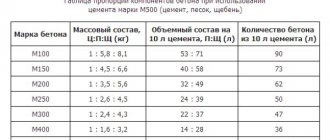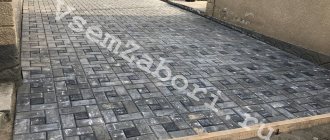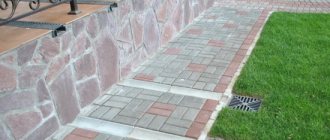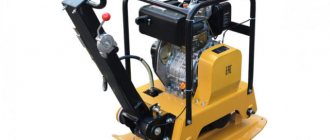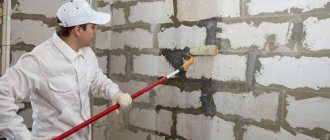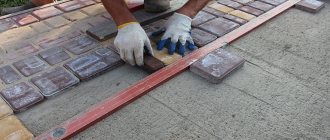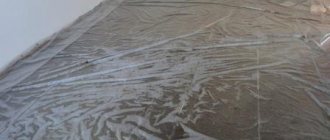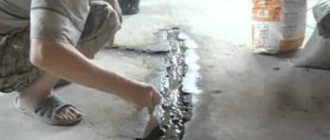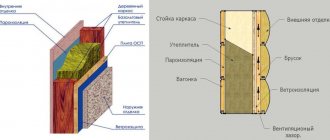Tile as an element of interior decoration has been used by people for many centuries. The popularity of this material can easily be explained by its simple installation, durability, and large selection of colors and styles.
Today there are two types of tiles, one (thin and light) is intended for wall decoration, the second (thick and heavy) is used for floors.
Floor tiles should lie on a base prepared in advance . This procedure involves filling the screed with a special solution. Previously, screed was mainly done using a cement-sand mixture. This was not a very successful method of preparing the base, since such a screed took a long time to dry and often cracked.
Nowadays, mortar manufacturers produce a wide range of different dry mortars, which dry much faster and are much stronger than traditional cement mixtures.
However, even when such screeds are poured, cracks often appear in the base after drying. If this happens, the home owner is faced with a dilemma whether to lay the tiles on such a screed.
Most experts are firmly convinced that this is not necessary, since this decision can lead to many problems in the future.
Let's look at why many craftsmen do not recommend laying tiles on a cracked base.
How long does it take for floor screed under tiles and laminate to dry?
By and large, you need this so that if a pipe breaks, water will not flow down to the neighbors immediately, but after some time. Waterproofing is only needed on the bathroom floor. With a 10 cm approach to the walls. Everything else is from the evil one. And they don’t waterproof under the tiles in the kitchen. For the simple reason that water DRAINS from the wall! for such protection and tiles...
Ksenia Gorshkova
Approximately how long will it take for a sand concrete floor screed to dry? Almost! The tiles can be laid in two days. But with laminate it’s a little more complicated. The main thing is that the screed “does not release water” - this is the main thing. It's easy to check the degree of readiness. In the evening (after 2 weeks) lay polyethylene film in the places where the largest layer of the mixture is... In the bathroom and corridor, a couple of days will be enough for it to set and you can glue the tiles. Under the laminate, it needs to dry for at least 4 weeks, of which you need to water it for the first 2 weeks and cover with film to prevent cracking
Vladimir Sumarokov
Approximately how long can it take to renovate an apartment of 117 square meters? No finishing at all. That is, + 110 m2 (270 m2 of walls) - 3 people plastered and poured the screed in 9 working days - in short 2 weeks Electrical details, putty, Slopes on sandwich windows, water and plumbing, tiles in the bathrooms another week and a half by... Looking what do you want to do there? We built an apartment of 90 square meters from scratch, there was no electrics, no pouring of the floors. A crew of 3 people (a smart guy and two sons), they did the electrics for a week, then the floors took a week to dry, and then...
Ivan Dostavalov
Really, IN 2 WEEKS they will make repairs in a new building with rough finishing?! Really. Tajiks do it quickly and inexpensively. From 3 to 6 months Well, here's an example. 1ka 46 sq.m. Plastering, puttying walls - 300 rubles (this work is very cheap) = 30,000 rubles, 5-10 days. Rotband, fugen - 5-7 tr. You can fill the floors to a level of 5000 materials yourself. Laminate and tiles (materials)... there the walls need to be installed and plastered. and then just the tiles, the toilet, and the bathroom. And don’t forget about pipe wiring and electricity - which, most likely, is only in the panel. Without sockets and lights in the rooms, a couple of months will be enough. if there are 10 people...
Oleg Sofronov
Fill the floors with cement mortar. Layer 5-7 cm. Approximately how long will it take to dry? You'll have to fly above the floor for a week. And then be careful with heels. The slower it sets, the stronger it will be. In order for the layer to be durable, it must be kept moist for 5 - 7 days. To do this, water it regularly with water or cover it with plastic wrap. You can walk carefully the next time...
Lev Plotnik
What is the most inexpensive option for finishing a bathtub? Under the plastic, the wall needs to be leveled with a frame or plaster and then glued with plastic, tiles are cheaper and there will be less work. The cheapest white tile is 150-200 rubles no more expensive than m2 of plastic. Plastic is a collective farm that was sculpted... Using water-dispersed paint for wet rooms For the father to spare money - this is bad, young man, very bad There are cheap Chinese tiles, when buying, go through all the tiles in the boxes - to identify the defective ones, the price turns out to be decent panels, but you will have to buy a lot of things for the panels (or sheathing and screws and plastic. The liquid nails profiles themselves are a bit expensive ,
Daniil Sosnin
How can you temporarily protect the wall above the bathtub from splashes? Hang another plastic curtain on a sliding rod against the wall. There seems to be a ceiling above the bathroom. The lining can be glossy. Best of all - with your own bodies! Simultaneously, or one by one. Why? I've been living like this for 2 months now. Wash yourself carefully so that the polyethylene or bath curtain does not splash heavily. Place it on the wall, secure it around the perimeter with paint glue or tape.
Kirill Neklyudov
How long does it take for a floor screed to dry under tiles with a warm floor function? According to good instructions, concrete and cement mortar gain strength in 21-28 days. But you can lay the tiles in 3-4 days. But turn on the floor after 21-28 days. The cement screed hardens within 24 hours and can be walked on within 24 hours.
Alina Lizunova
How to properly pour concrete for a bedroom floor? After the boards have been torn off (there is earth underneath them), how long should the floor dry? I love good photos. There is no need for concrete here, throw everything out, remove the soil by 20 cm, plaster the walls below for these 20 cm and up to about the heating pipe with a sand mixture with the addition of a cement-based water stop. Sprinkle 5 cm of protective... It takes a month to dry. The smartest thing to do is to lay waterproofing, then lay 100mm extruded polystyrene foam insulation, and pour 5-7cm of M300 sand concrete screed onto it. It will be both warm and inexpensive. If you fill the entire thickness with concrete it will be ruinous and cold….
Nadezhda Yadrikhinskaya
It turned out that water got on the flooded M-300, apparently the workers didn’t pay attention and it didn’t dry out for a long time. In fact, the screed needs to be moistened in case of direct sunlight/draft. Where did you do it? If in the bathroom, then, of course, there is no need to moisturize. Not the point. I want to say that there should be no puddles, you need to moisturize evenly.... Concrete definitely lost its strength due to excess water. M-300, what kind of loads are planned, if it’s not a secret?
Victoria Krysova
How long does it take for a self-leveling floor to dry? There are different mixtures. They generally harden within 8 hours. If there was more water in the mixture, then it will take longer to set, up to 2 days. The floor covering can be laid no earlier than after 3 days and up to 14 days (if the screed is 3-4 cm thick... 2 days If it is a Self-leveling cement mixture Litoliv S15, then after 4 hours you can walk, after 8-12 hours you can cover it If it is a Self-leveling cement mixture Litoliv Extra 15, then after 3 hours you can walk, after a day you can veneer...
Alena Dektereva
Can you tell me what is the best screed to use for the floor? I hope to hear real feedback, thanks. I'll listen. Does it depend on how much to raise? Usually sand concrete or self-leveling floor. If the screed is thick, then expanded clay is poured. The besto screed suited us; we did the renovation last fall. the floor turned out to be smooth, of excellent quality and it was not difficult to work with this mixture, the necessary components were initially added there, there was no need to knead anything additional, which saved...
Albert Zorich
How to live without a toilet? We've been here for 4 days already. Who had their toilet and bathroom renovated? How long have you gone without a bath? I never leave my clients without a potty. You can always find a way. One of these days I will be doing screed, heated floors and tiles on the floor and walls - if anyone is interested, I can post pictures later on how not to leave clients without amenities Do you have gasters working there? During the renovation, I moved the toilet into the bathroom, on a corrugated wall, and made the bathroom backwards
Ivan Ilyin
How long does it take to renovate a toilet and bathroom? With plaster, I have a turnkey bathroom with a toilet in 1.5 months. It can't be faster. Professionals can do this amount of work in about a month, real professionals, not just a fool. From 2 weeks to a year! It all depends on the condition of the bathroom, and accordingly on the amount of work. Approximate terms from 2 weeks to 1 month. Plaster, for example, a 50 mm layer will dry every 10 mm for 3-5 days. Sand concrete screed, do not lay the tiles before 3 weeks, dry modified…
Arthur Zhdanko
Gentlemen builders! Please advise a tile adhesive that dries quickly, we can lay the tiles on the floor, in the bathroom. The question is that the adhesive must set, that is, it must undergo a complete chemical reaction, and if it dries earlier, it will crumble like sand. Leave it for a day to remove, no matter what. Yes, all adhesives dry approximately the same. it all depends on the thickness of the layer. approximately at the rate of 3 hours per millimeter of glue thickness. That is, with an average thickness of the adhesive layer of 8 mm, the initial hardening time (so that you could walk lightly)…
Roman Marzakhanov
A question for those who understand the repair, it will take at least 2 months, depending on which team, how many people, if 5-6, then they can handle it. Maybe they can, in principle, the deadlines are real, but I wouldn’t take them because they are very self-confident and do not take into account all sorts of nuances, and there will be so many of them, it all seems simple. If they don’t drink and the delivery of the material is on time, they'll make it! I myself worked on my own, the main thing is to plan everything while the plaster is drying in one place in another, bathroom unit, suspended ceiling, tiles on the walls and floor installation...
Larisa Vyacheslavova
How to lay tiles on a wooden floor You should not lay tiles on the floor. Make c. n. reinforced screed 5 cm or more thick. If the floors are wooden, then do not overdo it so that they can withstand the screed. If the floors are reinforced concrete, then it makes more sense to remove the wood! PVC - tiles are possible. If only on top of the wooden floors there is a concrete screed at least 5 cm thick (reinforced in addition). Otherwise, money is down the drain.
A mixture of glue and sawdust for wooden surfaces
If there is a wooden base that requires leveling, then you can use another method. It consists of leveling the floor or any other surface using a simple mixture consisting of sawdust and PVA glue. Leveling is carried out strictly according to the level using beacons. A mixture of sawdust and PVA glue can set very quickly if the sawdust is not moistened with water.
If the floor is an “accordion”, then you can level them using sheets of chipboard, plywood or hardboard. This is easy to do, since the wooden base allows such sheets to be attached in any available way.
The adhesive mixture takes quite a long time to dry, but the strength is at the highest level.
Is it possible to lay tiles on a wet leveler?
| What problems can arise if residual moisture in the base is not taken into account? When assessing the quality of the base, one of the main criteria before laying floor coverings is the amount of residual moisture in the base. The effects of moisture on floor coverings may vary. These include swollen “bubbles” on rolled PVC coverings, “folds” and the unpleasant odor of carpeting, swelling and destruction from the inside of natural linoleum, diverging seams of cork coverings, raised edges of laminate and parquet boards, the formation of “waves”, uneven darkening of natural stone and reducing the adhesion of porcelain stoneware and tiles to the base. In the case of a floor covering made of ceramic or porcelain tiles, an insufficiently dried screed may subsequently shrink, and then the tile and adhesive layer will peel off from the underlying surface. A typical case is formed by “sagging” of the screed in the corners of the room - especially when the screed itself is placed on a sound or heat insulating layer (floating screed). |
How to choose?
The choice in favor of one or another type of dry floor screed should be based on several indicators. First, you need to clearly imagine the final desired result, evaluate the parameters of the room, its operational properties, microclimate, the presence and condition of neighboring rooms.
Next, you should consider the time frame for repairs and how quickly you need to get the finished surface. The budget that is expected to be spent on laying floors is also important. Quality, reliability, and durability depend on this.
In each specific case, one should take into account the totality of characteristics, and only then decide on the type of material and additional components. Before using this or that method, it is recommended to consult with professionals.
After how many days can tiles be laid on the screed?
As a result, the tile coating peels off in places where the screed subsides, as well as it lags behind the insulating layer in the direction from the corners to the center of the room.
Before laying the tiles, the residual moisture content of the base, in accordance with the standards, should not exceed 3-4%. Tiles can be laid on traditional cement screeds no earlier than after 28 days, except in cases where special leveling compounds were used for their manufacture.
We recommend the special leveling compound KREPS RV for preparing bases for tiling or porcelain stoneware. The composition and technical characteristics of this mixture allow the base to be ready for cladding in just 3 days, and walking on the screed is possible after 12 hours. To normalize hydration processes and reduce internal loads, as well as reduce the risk of cracks at the initial stage, the RV screed contains synthetic reinforcing fibers. But no matter how much you would like to bring the residual moisture content of the base back to normal, it is not recommended to force-dry the screed using “heat guns”, since accelerated loss of moisture from the thickness of the screed can cause it to peel or crack due to insufficient time required for the normal flow of chemicals strengthening processes - the interaction of water and the binding elements of the solution. In the cold season, work on screeding cannot be carried out at temperatures of the base and ambient air below +5 C.
| Posted by: | KREPS |
| Source: | Own information |
| Account: | Kreps |
| date: | 16.03.15 |
Photo gallery of the article
Semi-dry screed is the best surface for laying tiles.
Our greatest friends are tilers. No wonder. The usual norm for laying porcelain stoneware or ceramic tiles is 8-10 square meters. for an 8-hour working day for one person. After our screed is made using a semi-dry method, the surface becomes smooth and rough. This is an excellent base for laying floor tiles. The average tiler is able to lay 18-25 square meters on such a surface. tiles in one working day without wasting tile adhesive! Hint: The customer can monetize this fact for himself.
Two days after installing the screed, you can begin laying the tiles. To do this, the surface of the screed must first be treated with a deep penetration primer using a roller. This primer provides dust removal from the surface and promotes the adhesion of tile adhesive to the surface of the screed. It is not at all necessary to use expensive primers such as Betonokontakt. It is important that after applying the primer to the surface of the screed and until the completion of laying the tiles, the primed surface remains clean.
Reviews
You can often find reviews from those who have already used Knauf screed technology. Users of the dry method share their positive and negative experiences.
Thus, many note the good soundproofness of floors, surface quality, and long service life. It should be noted that those who used only high-quality materials and carried out work in compliance with all rules are quite satisfied with the end result. In the future, they also plan to use only this method when renovating floors.
There are also those who do not like the appearance of such floors, their simplicity, too high a height, as well as restrictions on use in wet areas. Many are put off by the high cost of the method. Often negative experiences are associated with the consequences of using low-quality materials that contain foreign impurities. When using such surfaces, creaking and irregularities may appear.
